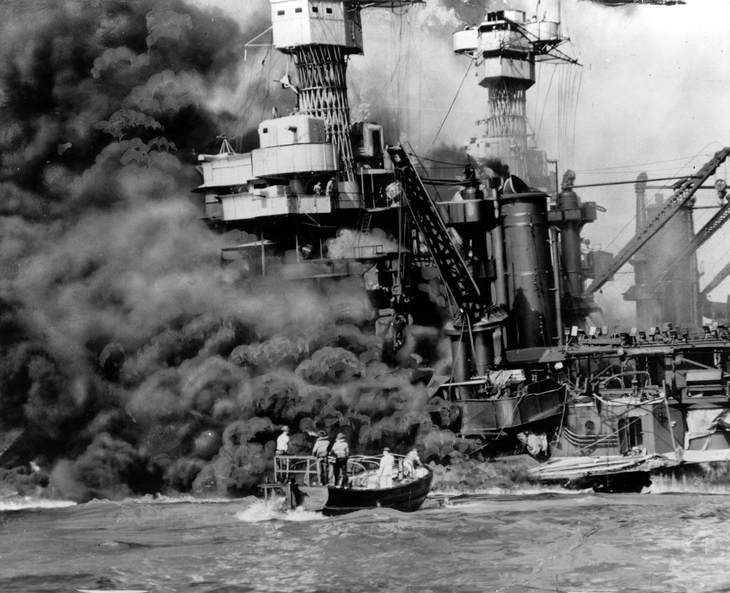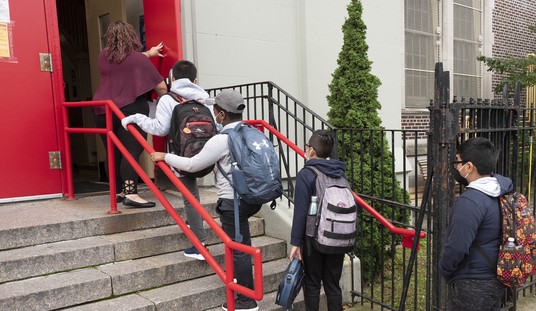Even a well-meaning and thoughtfully executed arms control regime can give a weaker aggressor the mistaken belief that they could prevail in a military conflict, making war more likely instead of less.
Barack Obama’s 2010 New START agreement was not thoughtful, and you might be right to harbor doubts about how well-meaning it was.
In a time of decreasing tensions, arms control agreements can help to reduce those tensions further, but they can be nearly impossible to negotiate during times of increasing tensions.
President Ronald Reagan began negotiations with the USSR for what would become the Strategic Arms Reduction Treaty (START) in 1982. The aim was, for the first time, to get both sides to reduce their inventories of nuclear warheads and their delivery systems, like missiles and bombers.
But after a decade of so-called detente, relations between the Cold War rivals had rarely been more strained. Reagan concentrated on building up our conventional forces (and began our first forays into ballistic missile defense) and those tensions prevented START from being ready for nine years.
START was signed (opposite Soviet premier Mikhail Gorbachev) by Reagan’s successor, George Bush, less than six months before the Soviet Union ceased to exist. The treaty didn’t come into effect until 1994 when Boris Yeltsin led the core Russian Federation. By then, relations with the U.S. were already so relaxed that President Bill Clinton infamously held a joint White House press conference with Yeltsin, both leaders seemingly drunk.
As such, START was a success, allowing both countries to build down from ridiculous “make the rubble bounce” numbers of nuclear arms.
Eager to leave his mark on the politically popular field of arms control, President Barack Obama negotiated the New START agreement with Vladimir Putin’s increasingly frisky regime* in 2010.
New START reduced both sides’ traditional nuclear weapons and delivery systems much more than START did, with each side drawing down to just 700 missiles and bombers carrying no more than 1,550 warheads.
I once asked my father-in-law — a former USAF fighter pilot and involved in ballistic missile defense for nearly 20 years — whether New START was a good or bad treaty. “It depends on which part you’re talking about,” Col. Richard Davis (ret.) said without hesitation.
While Pop enjoys having fewer enemy missiles to worry about having to shoot down in the event of a war, Obama got suckered by Moscow on what New START doesn’t cover.
At the same time Obama was busy preening with promises that New START would “move us further beyond the Cold War, strengthen the global non-proliferation regime, and make the United States, and the world, safer and more secure,” Moscow “began aggressively modernizing its nuclear forces.”
That’s according to U.S. Navy Admiral Charles “Chas” Richard in a recent issue of Proceedings, published by the U.S. Naval Institute.
“Russia,” writes Admiral Richard, “is building new and novel systems, such as hypersonic glide vehicles, nuclear-armed and nuclear-powered torpedoes and cruise missiles, and other capabilities.”
As Mike Turner and Tim Morrison noted recently for RealClearDefense, Moscow “is growing its stockpile, and the bulk of this growth is in so-called ‘non-strategic’ or ‘unconstrained’ nuclear weapons of the type the not included by the Obama Administration in the New START treaty.”
The authors conclude that in the years since Obama committed this country to the New START agreement, “the status quo is therefore very much in Russia’s favor: Putin had managed to exempt from arms control the bulk of his nuclear modernization program.”
Turner and Morrison also quoted Donald Trump’s former secretary of state, Mike Pompeo, speaking last October:
President Trump has made clear that the New START Treaty by itself is not a good deal for the United States or our friends or allies. Only 45 percent of Russia’s nuclear arsenal is subject to numerical limits, posing a threat to the United States and our NATO allies. Meanwhile, that agreement restricts 92 percent of America’s arsenal that is subject to the limits contained in the New START agreement.
Students of history might be reminded of post-First World War efforts to reduce and restrict the navies of the world’s Great Powers — and how those agreements helped to bring about the Second World War.
Generally regarded by historians as a first-of-its-kind success, the 1922 Washington Naval Conference on disarmament forced steep cuts to all the world’s major navies. Most importantly, the Washington agreement fixed a strict ratio of naval forces between the U.S., Imperial Japan, and Great Britain.
While the American and British fleets had global responsibilities, Imperial Japan’s interests were more localized. That meant that while the other navies were spread out across the globe, Japan’s forces could be kept concentrated — and regionally more powerful.
Japan could never have kept up with America’s immense shipbuilding industry, as the Empire would come to experience quite directly in 1943-1945.
But the Washington Naval Conference (and the follow-on London Naval Treaty of 1930) proved to be a huge temptation for Imperial Japan’s militarists.
With the size of the American and British fleets absolutely known, the Imperial Japanese Navy (IJN) was free to focus on making itself a more innovative fighting force. To that end, the IJN pioneered much new naval warfare thinking.
The IJN innovated in three areas: Night fighting, ship quality over quantity, and most importantly, the use of massed carrier strikes.

IJN pioneered aircraft carriers taking over the battleship’s primary role in naval combat, and further innovated using multiple carriers and their support ships as a single fighting unit. That thinking eventually resulted in the formation of Japan’s 1st Air Fleet (or Kidō Butai) that so bedeviled Allied forces from the strike on Pearl Harbor, all the way until its demise at the Battle of Midway.
Japan hoped that their innovations could beat us in a quick war. Disarmament under the Washington and London treaties had convinced Japan’s militarists that they could destroy enough of our navy at the outset of hostilities to force a decision, and more importantly that we lacked fighting spirit.
And so it is now with Vladimir Putin’s Russia.
Moscow is building innovative new weapons not covered by Obama’s New START restrictions. It might not matter that, just like the Kidō Butai, Russia’s novelty nukes (for lack of a more sinister phrase) might prove immaterial to the outcome of a hypothetical conflict.
But the combination of Obama’s tunnel-vision disarmament, and President Joe Biden’s seeming decrepitude, could prove as tempting to Moscow in our postmodern time as our apparent weakness was to Tokyo in time before Pearl Harbor.
Mutual Assured Destruction (MAD) kept the peace during the Cold War, but our aging nuclear arsenal and Russia’s rapidly modernizing arsenal do give one pause.
It’s a MAD world all over again… or at least it had better be.
—
* Yes, I know Dmitry Medvedev was technically the president of Russia at the time, while Putin accepted a demotion to prime minister in order to avoid term limits. But Medvedev was clearly a figurehead while Putin continued to call the shots.










